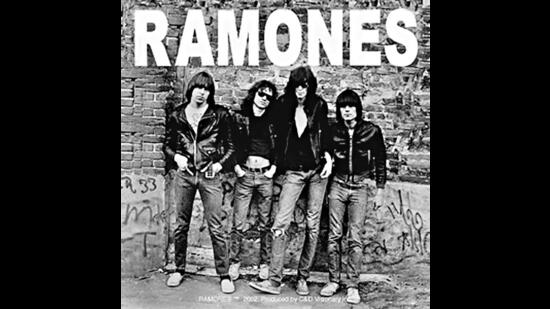Every generation believes it has solved the problem. Every generation then looks back in horror. We love our jeans, but we just can’t seem to nail what they should look like.
In the 150 years since they were first patented — by Jacob Davis, a tailor, and Levi Strauss, owner of a wholesale fabric house, in San Francisco in 1873 — they’ve been worn shredded, faded, embellished, flared, cropped, and cuffed.
That recognisable tint, the blue of indigo dye, came about because the latter interacted well with cotton, staining the surface without going all the way through, and sticking fast to the fabric
But the iterations have come from all over. Blue jeans have been worn too tight and too loose (and both at the same time, in different places). Too low and too high. Too dark and too light.
This decade, the flared leg is regaining favour after skinny jeans ruled for almost 15 years. What did blue jeans look like when they first appeared on the scene, and how far back does your favourite style go? Take a look.
The “waist overalls”: Between 1873 and 1950, jeans were built to be practical rather than stylish. The patented design used copper rivets to reinforce stress points such as pocket corners and the base of the fly. This first Levi’s model was nicknamed “waist overalls” and marketed as hardy workwear for miners, farmers and cattlemen.
These pants sat just above the hip, with a straight leg, one back pocket, one watch pocket, a buckled waist cinch, suspender buttons, and a button-up fly. They became particularly popular among miners, cowboys, and manual labourers in rural America.
The first model for women was released in 1934, marketed as hardy workwear for women on farms and ranches.
Boxy: By the 1950s, the blues ranged from powder to navy, with a cuffed, boxy style becoming popular after Hollywood stars such as Marlon Brando and James Dean wore this style on screen, while playing working-class men in films such as A Streetcar Named Desire (1951) and Rebel Without a Cause (1955). This was also the dawn of the popularity of the white T-shirt (and the tee paired with blue jeans), Until this point, the tee had primarily been an undershirt.
Urban women were wearing jeans now too. In 1954, Marilyn Monroe furthered this trend when she wore a pair in River of No Return.
Flared, frayed, embellished: By the 1960s, the silhouette was becoming more relaxed, fitted at the waist and flared towards the bottom. Embellishments were in, with the Flower Power generation adding patchwork and embroidery as a form of self-expression. Popular styles included the bell bottom, boot cut, and elephant bell (which covered the shoes — often platform heels — entirely). Blue denim jackets became trendy. Think Sonny and Cher, Mick Jagger, and Jimi Hendrix. And the white T-shirt turned into a placard. At marches and sit-ins against everything from the Vietnam War to racial inequality, students and protestors wore tees with raised fists and peace signs on them.
Slim, straight legs: The flared leg straightened out in the 1970s. Driving this trend were the Levi’s 505 jeans launched in 1967. The zipper replaced the button-up fly. A hook-shaped back offered better support and a more rounded rear silhouette. These jeans were everywhere at this time. Look closely and you’ll see that all four members of the band Ramones are wearing them on the cover of their self-titled 1976 album.

Acid-washed: Chemical distressing, invented in the 1980s, transformed the look of the blue jeans, starting the slide towards faded and ripped. The early acid-washed jeans were a skinny cut with tapered cuffs to reveal a hint of socks beneath. Interestingly, the acid-wash is rooted in 1960s California surf culture. Surfers grew tired of their jeans fading in the sun and began to use chlorine bleach for a more uniform worn look. The practice exploded in the ’80s as part of the punk scene, and in 1981 Guess released the first “pre-washed” bleach-splattered jeans. In 1986, the chemical process called the acid wash was patented in Italy and commercialised by Italy’s Rifle Jeans. It used a form of chemical bleaching that broke down the fibres and forced the dye to fade (hence the accompanying distressed look)
The baggy jeans: In the 1990s, amid the rise of grunge and hip-hop, oversized clothing, baggy jeans, and bold, graphic prints caught on. Baggy jeans entered mainstream fashion as Hammer pants (popularised by the rapper MC Hammer) and parachute pants, worn as loose as a dhoti in the top half, to facilitate break-dancing. A straighter silhouette — baggy but not balloony — would become popular with skaters and punks, as a way to set themselves apart from the metalheads and their skintight / acid-washed versions.
Baggy jeans have made numerous comebacks since, though they’re usually high-waisted with a relaxed fit, and are now called “mom jeans”.
Bling and belts: By the early Aughts — the age of Y2K fashion, Britney Spears, bubblegum palettes, and glitter embellishments — jeans began to come with bling and flashy chains attached. Ombre jeans and coloured jeans were popular. And there were jeggings, stretchy jeans made from a blend of cotton and spandex, that had to be pulled on like leggings.
What remains: Skinny jeans have been trendy, off and on, since they first appeared on the scene. Mom jeans hang on because they’re comfortable and body positive. A seemingly eternal silhouette with roots in the 1980s is the “workout look”: a baggy top paired with skinny jeans. High-waists are in today, as another evolution that embraces different body types.
This Republic Day, unlock premium articles at 74% discount
Enjoy Unlimited Digital Access with HT Premium

